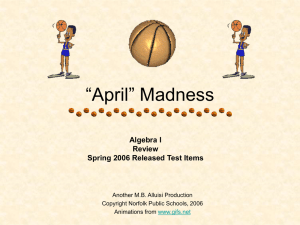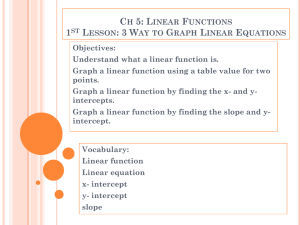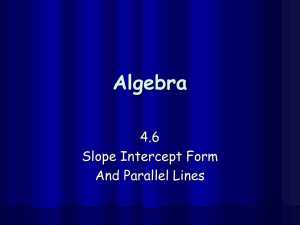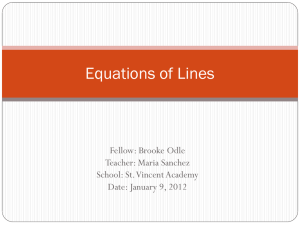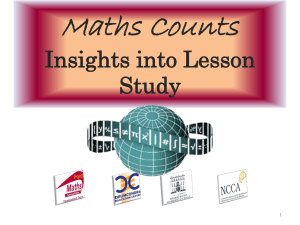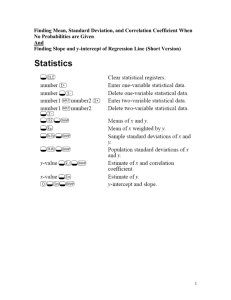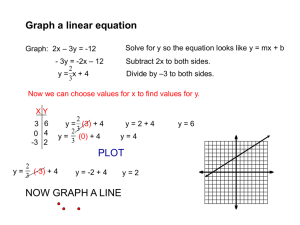TWISTER – Algebra - Do Math Together
advertisement
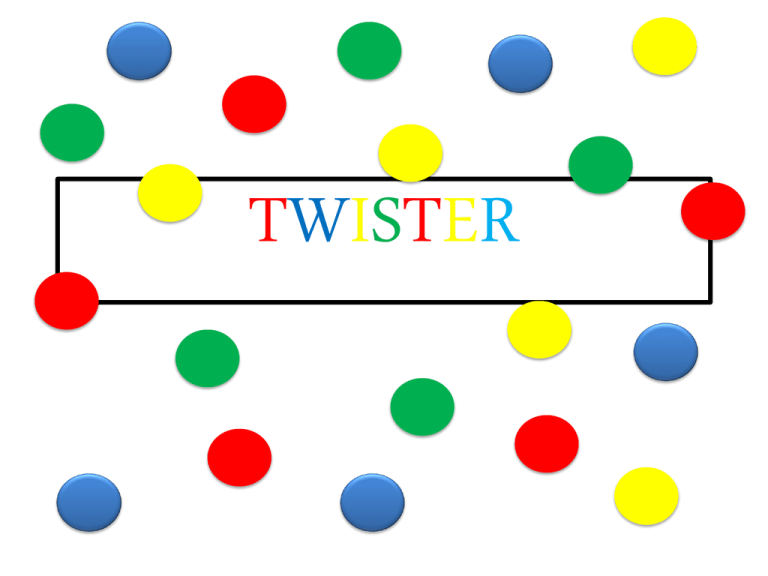
TWISTER TWISTER Directions: 1) Each student picks a circle with a color (red, blue, green, yellow) from a bag. 2) The teacher spins the spinner (either on Smartboard or homemade) and a color is revealed. 3) The teacher reads the first word of that color (yellow 1). Each yellow student has two minutes to write a definition of that word. 4) The teacher collects the definitions and reads them aloud without saying the student’s name. 5) The rest of the class votes on the best definition. The students get a point for each vote they get. 6) The students with the most votes after all words have been read is the winner. 1 2 3 4 5 6 7 8 9 10 11 12 13 14 15 16 17 18 19 20 21 22 23 24 Choose a number. relation Relation A set of ordered pairs. Example: (1, 2), (3, 4), (5, r) back Linear equation Linear equation An equation whose graph is a line. back Slope Intercept form Slope Intercept Form y = mx + b where m is the slope and b is the y-intercept back Rate of change Rate of change Allows you to see the relationship between 2 quantities that are changing back domain Domain Set of all x values back y-intercept y-intercept The point where an equation crosses the y-axis (vertical axis) back Independent variable Independent variable The domain or x value of a function. back Direct variation Direct variation y=kx, where k is the constant of variation back Parent function Parent function y=x back variable variable A symbol (letter) for a number we do not know yet. back decreasing decreasing The graph of a decreasing function always goes down from left to right. back Slope of a Horizontal line Slope of a horizontal line zero back dependent variable dependent variable The range or y value of a function. back Standard form Standard form Ax + By = C back x-intercept x-intercept The point where an equation crosses the x-axis (horizontal axis) back function function A relation that for every x value there is only one y value. back Point Slope form Point slope form y – y1=m(x – x1) back constant constant A number that is not connected to a variable by multiplication or division. (Stands alone) back increasing increasing The graph of an increasing function always goes up from left to right. back range range The set of all the y values back Slope of a Vertical line Slope of a vertical line undefined back correlation Correlation The degree to which two variables are associated. For example, height and weight have a moderately strong positive correlation. back Inverse operations Inverse operations The quantity which cancels out the a given quantity. Example: Addition-subtraction back coefficient Coefficient A number that is connected to a variable by multiplication or division back relation Independent variable dependent variable increasing linear equation direct variation standard form range slope intercept form parent function x-intercept slope of a vertical line rate of change variable function correlation domain decreasing point slope form inverse operations y-intercept slope of a horizontal line constant coefficient

